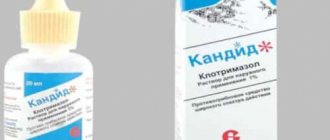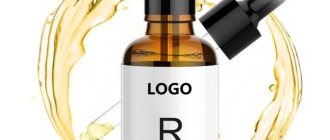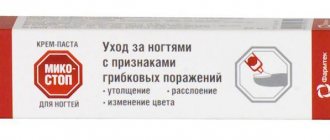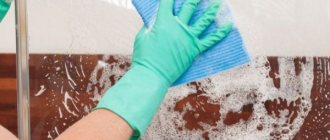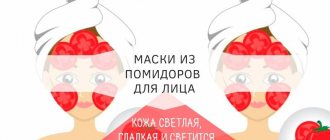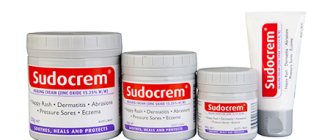Pharmacological authorities
Pharmacodynamics.
Hydrocortisone 17-butyrate is an active synthetic non-halogenated corticosteroid for local congestion. Shvidko repair the anti-fire, anti-nabryakov, anti-verbizhny operation. Its effectiveness is the same as that of halogenated steroids. Ingestion at recommended doses does not cause suppression of the hypothalamic-pituitary-supraglosal system. If you want to administer large doses of the drug over a period of three hours, especially with occlusive dressings, it can lead to an increase in cortisol in the blood plasma, which is not accompanied by a decrease in the reactivity of the pituitary-supragnosal system, and administration of the drug to ensure rapid normalization of cortisol production.
Pharmacokinetics.
Soaked up.
After application, there is an accumulation of active substances in the epidermis, especially in the granular sphere.
Metabolism.
Hydrocortisone 17-butyrate, absorbed through the skin, is metabolized to hydrocortisone and other metabolites directly in the epidermis, and then in the liver.
Vivedennya.
Metabolites and a small part of unchanged hydrocortisone 17-butyrate are excreted in the urine and feces.
Indications for use
Hydrocortisone is a hormone with a moderate effect on the body. In the ointment, the structure of the chemically synthesized adrenal hormone is modified by butyrate. Due to this, Lokoid has a more pronounced therapeutic effect than Hydrocortisone ointment. Active ingredient:
- relieves itching and burning;
- eliminates swelling;
- relieves inflammation;
- increases local immunity, preventing infection through diseased epidermis.
The main difference between Lokoid and drugs of the GCS group is the absence of a negative effect on sexual function and the hypothalamic-pituitary system. With the recommended frequency of use of the ointment, no addiction is observed, and there are no negative manifestations upon completion of the course of treatment (“withdrawal syndrome”).
The ointment is very well absorbed by the skin, penetrating into the deep layers. There, the main process of metabolic transformations of Lokoid occurs, due to which it almost does not enter the blood. Small doses of the hormone and its metabolites are converted in the liver. It is also excreted by the kidneys and gastrointestinal tract in a small amount.
What does the ointment help with? Lokoid is used to treat skin diseases of non-infectious origin:
- dermatitis of various etiologies - allergic, contact, atopic, seborrheic;
- psoriasis;
- eczema.
Contraindicated
- Skin damage caused by bacterial infections (for example, pyoderma, syphilitic or tuberculous infections), viral infections (for example, chickenpox, herpes simplex, surgical herpes, primary wart, flat wart, condyloma, molluscum contagiosum); infections caused by fungi and yeasts; parasitic infections (for example, scabs);
- virulence of the skin, wounds;
- adverse reactions caused by corticosteroids (for example, oral dermatitis, striae);
- ichthyosis, juvenile plantar dermatosis, acne vulgaris, rosacea, laxity of the skin vessels, skin atrophy;
- allergic reactions of hypersensitivity to the components of the drug or corticosteroids (the others rarely occur).
Contraindications
- hypersensitivity to hydrocortisone or auxiliary components of the drug;
- bacterial skin infections (strepto- and staphyloderma, gram-negative folliculitis, etc.);
- viral skin infections (herpes simplex, chicken pox, shingles, etc.);
- fungal skin infections;
- tuberculous and syphilitic skin lesions;
- parasitic skin infections;
- neoplastic skin changes (benign and malignant tumors);
- acne, rosacea, perioral dermatitis;
- post-vaccination period;
- violation of the integrity of the skin (wounds, ulcers).
Features of good stagnation
Do not apply the ointment to the eyelids because it may stain the conjunctiva and cause the risk of developing primary glaucoma or subcapsular cataracts.
The facial skin, genitals and scalp are most sensitive to corticosteroids. Thus, to treat illness in these plots, only weak corticosteroids can be used.
It is important to note that when corticosteroids are frozen on large areas of the skin, especially in vikristan (cellophane) bandages or in the folds, there is a possibility of increased absorption of the drug, which may lead to and until adrenocortical function is suppressed.
Suppression of the measles of the epidermis can quickly develop in children. The production of growth hormone may also be suppressed. When long-term treatment is necessary, it is important to regularly monitor the growth and body mass of the child, as well as determine the level of cortisol in the blood plasma.
When conducting regular research, no significant changes in adrenocortical function were found in children who were treated with Locoid® ointment for 4 days, or hydrocortisone 1% in a quantity of 30-60 grams per day. week
Stagnation of the drug in the skin of the skin, on other parts of the thin skin can lead to atrophy of the skin and increased absorption of the drug.
Corticosteroids for local congestion may not be safe for patients with psoriasis for a number of reasons, including “rebound syndrome” due to the development of tolerance, the risk of developing generalized pustular psoriasis and the muscles. o systemic toxicity due to the impaired barrier function of the skin. Steroids can be used for psoriasis of the scalp and chronic psoriasis of the hands and feet. It is important to carefully watch out for the sick.
Suspension during pregnancy or breastfeeding.
Vaginism:
Corticosteroids cross the placenta. At this time, there is daily clear information about the development of teratogenic effects in humans, similar to those that were observed in studies on animals. With systemic administration of large doses of corticosteroids, infusion into the fetus or newborn baby was reported (inhibition of maternal growth, adrenocortical suppression).
Regardless of the small amount of information available regarding the accumulation of corticosteroids on the skin of a person during the period of gestation, in view of their systemic absorption, it is possible that the corticosteroids become weak and die. nois (class 1 and class 2), such as hydrocortisone, for short periods of time and on adjacent areas of the skin . The obvious effects cannot be turned off when the skins have been cured or applied to large sections of skin. You can be more careful if special indications are evident.
Anniversary breastfeeding:
Locoid® ointment can be applied to women who are breastfeeding without just a short bath and application to small areas of the skin. With a long-term treatment or applied to large areas or on the affected skin, apply a bath to the chest.
This is due to the fluidity of the reaction during treatment with vehicles or other mechanisms.
Daily data on how to infuse Lokoid® ointment into the delivery of ceruvate by vehicles or mechanisms. Viniknennya is not overflowing.
Composition and release forms of the drug
Lokoid is a drug belonging to the pharmacological group of topical glucocorticosteroid drugs.
Depending on the percentage of water and active ingredients, the product is available in several dosage forms:
- Emulsion (Locoid Crelo) consists of 85% water, so it is used for delicate skin. Lokoid emulsion is used for seborrhea to soften the scalp.
- The cream has a water to lipid ratio of 70/30. The light texture of the cream allows you to use it at any time of the day or night. It is quickly absorbed and does not leave greasy marks on the skin and clothes. It is used if itching and irritation are not accompanied by cracks and flaking (excessive dryness).
- Lipocrem contains 30% water, and the rest is lipids and nutrients. The drug softens the crust, eliminates flaking, and effectively fights eczema and dermatitis.
- The ointment has a greasy consistency and is used if itching and inflammation are accompanied by dryness and flaking.
Regardless of the form of release of the drug, the main active ingredient is hydrocortisone - a hormonal substance that relieves itching, redness and irritation of the skin.
Ointment
In addition to the active substance hydrocortisone, the ointment uses a vaseline base, which also has a number of useful properties.
Firstly, Vaseline is oily and serves as a conductor, passing molecules of the active substance through the pores of the skin.
Secondly, it has a protective effect, enveloping the epidermis and creating a breathable film from negative external factors. Quickly has an analgesic effect and relieves itching.
Cream
Softens and nourishes the skin.
In addition to hydrocortisone, the composition contains cytostearyl alcohol, which has a disinfecting effect.
Paraffin is used to protect against moisture, microbes, and ultraviolet radiation.
Emulsion
The composition contains borage oil, which has a quick healing effect.
Thanks to its delicate texture and minimal amount of active ingredients, it can be used on the delicate skin of a child from 6 months.
It is produced in a convenient bottle, which allows you to apply the drug pointwise, for example, when the scalp is affected.
Method of congestion and dosage
Apply the drug to a small amount on the skin 1-3 times per day. In case of swelling, as a rule, it is sufficient to take the drug once per dose or 2-3 times per week.
The initial course dose should not exceed 30-60 g per week.
Apply Lokoid® trace with an even thin ball to the skin area. The drug can be carefully rubbed into the skin to speed up its penetration.
To ensure a short therapeutic effect, you can apply an occlusive bandage.
Children.
Keep children under 3 months of age.
special instructions
Lokoid should not be applied to the periorbital area due to the risk of developing glaucoma. In case of systematic contact with the conjunctiva, there is a risk of increasing intraocular pressure.
When the process is localized on the scalp and with exudative inflammation, it is preferable to use Lokoid in the form of Crelo.
In cases of resistant disease, for example, when dense psoriatic plaques are localized on the elbows, knees, severe lichenification, dryness, it is better to give preference to Lokoid in the form of ointment or Lipocrem, if necessary, under occlusive dressings.
It is not advisable to use the drug in the presence of atrophic skin changes. The risk of local and systemic side effects increases when applied to large areas, long-term use, use of occlusion and in childhood.
If there is no effect within 2 weeks of continuous treatment, the diagnosis should be clarified.
As with the use of any glucocorticosteroid drug, it is advisable to limit the duration of use and the course dose to the minimum sufficient to stop the skin process.
Side effects
| Body system | Rarely (>1/10000, <1/1000) | Very rare (<1/10000, including birth dates) |
| On the side of the immune system | Hypersensitivity | |
| On the side of the endocrine system | Adrenocortical suppression | |
| From the side of the organs | Displacement of the internal eye pressure, displacement of the rhizic of cataracts (with local congestion) | |
| On the side of the skin and under the skin | Contact allergy; pustular acne; atrophy of the skin, often non-negotiable, which is accompanied by thinning of the epidermis, telangiectasia, purpura and striae; depigmentation; rosacea-like and oral dermatitis, which is or is not accompanied by skin atrophy; “rebound effect”, which can lead to steroid overload; dermatitis and eczema, including contact dermatitis, aggravation of wounds; hypertrichosis. |
Systemic adverse reactions to local corticosteroid ingestion in adults rarely occur, but may be serious. Adrenocortical suppression is especially noticeable when the drug is ingested.
The risk of systemic effects increases in the following cases: vicarious dressings (cellophane dressing or skin folds); skins cured on great plots; long-lasting rejoicing; when children are sick (children are extremely sensitive due to the fact that children have thin skin and a relatively large surface area); the presence of components or additional speech that will allow penetration through the horny ball and/or enhance the effect of the active speech.
The risk of local adverse reactions increases with the increasing strength of the drug and the hassle of treatment. The tightness of the bandage (cellophane bandage or applied to the skin folds) moves this rizik. The skin of the scalp and hairy area of the head, as well as the genitals, are especially sensitive to adverse reactions. In case of unexpected congestion, as well as in the presence of bacterial, parasitic, fungal or viral infections, the manifestations of these illnesses can be masked and/or intensified.
